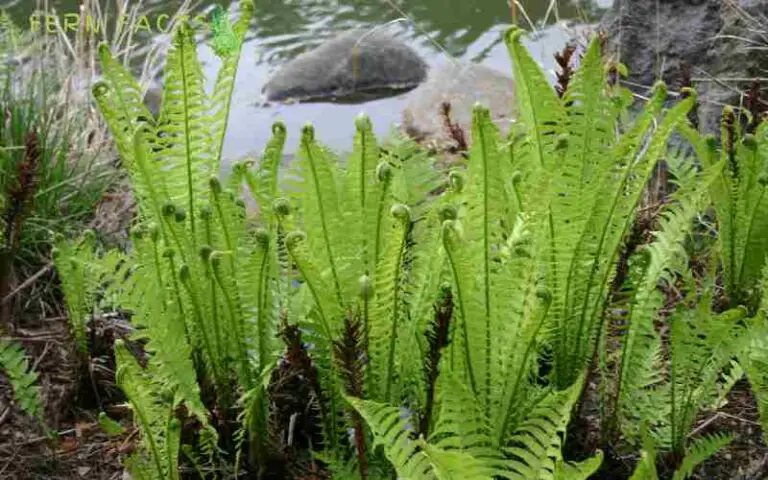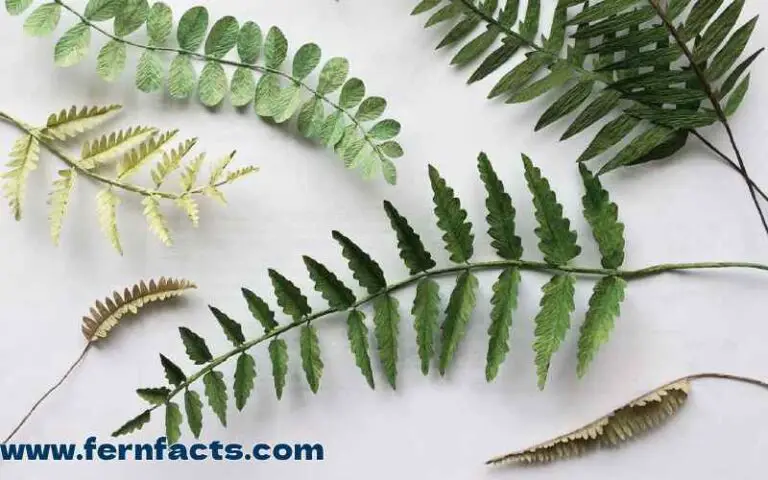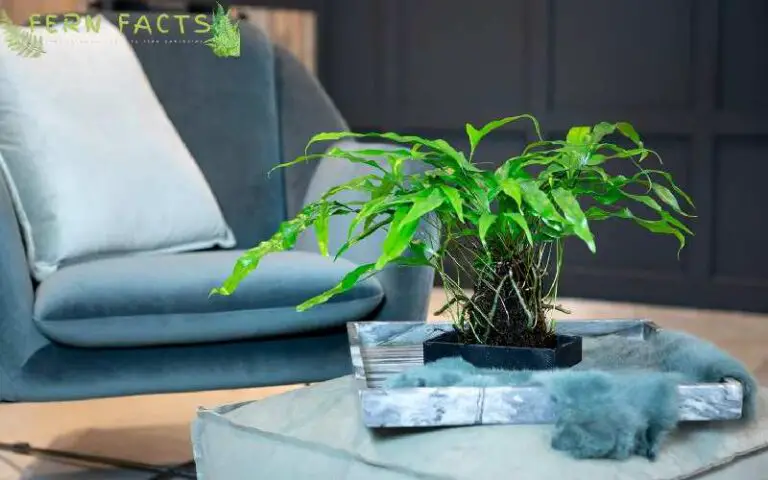What is a Mosquito Fern: Mosquito Fern Habitat Info and More
Have you ever heard of the name Mosquito fern? Does it sound a bit strange to you? Well, but this is true, Mosquito ferns actually do exist.
If you are curious about this Mosquito fern then read this article thoroughly. In this article, I’ll provide all the information regarding Mosquito ferns such as what is this Mosquito fern, their growing requirements, habitats, reproduction process, and ecological benefits.
Thus, by reading this article, you will be able to understand this fern’s characteristics. So let’s start with the Mosquito Ferns overview.
Overview of Mosquito Fern
- Botanical name: Azolla filiculoides / Azolla
- Common names: Mosquito Fern, fairy ferns, water fern, duckweed ferns
- Plants: aquatic plants
- Family: Salviniales
- Native Region: California, Australia
- Native habitats: tropical freshwater, rocky mountains, ponds, rivers, lakes, streams
- Shade: partial to full shade
- Tolerance: Wet Tolerance
- Hardiness zone: 7 to 11
Mosquito ferns are basically aquatic ferns that are widely distributed in tropical regions. These Mosquito ferns prefer tropical freshwater to diverse.
These ferns are also used for cultivated purposes in many places as well as ornamental plants.
What is a Mosquito Fern?
Mosquito ferns are one kind of species of genus that has seven species existing currently. These Mosquito ferns are actually floating aquatic ferns which have two alternative green fronds, organized in two directions.
The upper portion of the frond floats on the water. On the other side, the opposite portion of the fronds remains underwater or submerged. These Azolla or Mosquito ferns have six other varieties in their phylogenetic cycle.
In this cycle, Mosquito ferns, feathered mosquito ferns, large mosquito ferns, Mexican Mosquito ferns, and eastern Mosquito ferns are the most common species that are widely native to tropical regions.
Moreover, they are also known as fairy moss, duckweed fern, or water ferns since they are specifically inhabitants of the water. These mosquito ferns are quite small; almost around 2 to 2.5 cm.
Similarly, it has been rumored that the name Mosquito ferns was given, as these ferns prevent or discourage Mosquitoes from laying their eggs.
These ferns formed a thick layer of surface over water which thoroughly discouraged Mosquitoes and other insects from laying eggs there.
Mosquito Ferns Habitats Information
Mosquito ferns are mostly native to places like Africa, Asia, China, Japan, New Genua, the Philippines, and a few parts of Australia. They need fresh, clean water as their habitat.
Mostly, they have been discovered near rivers, ponds, lakes, and slow-moving water streams. Apart from watery places, they can be seen in habitats on the resting mud as well.
Reproduction Process of Mosquito Ferns
Unlike many other ferns, these Mosquito ferns are heterosporous. It means they can produce two kinds of spores; one is male sporocarp and the other one is female sporocarp.
Male sporocarps usually have greenish and reddish appearances which bear an abundance of sporangia. Those male spores are quite small and produce microsporangium.
Conversely, female sporocarps are smaller compared to male sporocarps. Only one female spore is identically bigger than the male one which is called megaspores. Mosquito ferns both contain male and female gametophytes which later develop as male and female spores.
Eventually, female gametophytes produce megaspores. The megaspores structure is called archegonia; each archegonia bears one egg.
After that, male spores transfer into gametophytes; this structure is called antheridium. Antheridium generates 8 swimming sperms and sticks to the female spores which utilize the fertilisation process.
Growing Requirements of Mosquito Ferns
Mosquito ferns thrive in partial to full-shaded places. This means they need mostly indirect shaded places to grow and thrive. Similarly, they can be grown in any slow-moving stream, river, container, or aquarium under ideal conditions.
If they get the right conditions, their fronds remain green. It means your ferns are growing actively. However, if they become red or brown; means they are being stressed out.
Likewise, red and brownish fronds are a sign of your ferns getting excessive nutrients or brightness which stresses out the ferns. Thus, they prefer fresh, clean water with partially shaded places to thrive actively.
Are Mosquito Ferns Invasive?
Certainly yes! These Mosquito ferns are quite invasive plants. They are highly reproductive plants that can enlarge their biomass within 2 days.
Based on their growing atmosphere and conditions, their growth can vary from species to species. Since they thrive in water areas like ponds, lakes, and streams; they can fill the whole place within a few days by their invasive growth. However, native tropical plants can tolerate cooler temperatures.
So, they can form a thick layer of approximately 12 inches and can fill the whole place within a few days. And so, they prevent lots of insects and mosquitoes from laying their eggs on the water surface. Thus, in many cases, they play a vital role in aquatic ecosystems and biodiversity.
Ecological Benefits of Mosquito Ferns
Mosquito ferns hold immense ecological significance in many cases. Let’s look at some beneficial sides of this Mosquito fern:
Mosquito Ferns as Bio-fertilizer
Azolla or mosquito ferns are used as biofertilizers in many countries, especially in Southeast Asia. Over the thousand years, these became a significant part of China’s agricultural field.
In China, they plant rice seeds with Azolla during the springtime. Since Azolla releases nitrogen into the water which benefits the rice plants by giving them protein.
Further, rice farmers have been using this bio-fertilizer weed in their rice paddies for over 1500 years. Hence, this Azolla is also utilized as weed-suppressing for mulch.
Mosquito Ferns as Feed
Azolla or these mosquito ferns contain a rich portion of proteins, vitamins, minerals, and amino acids. These make them one of the high-quality feed or bio-fertilizers for animals.
This traditional bio-fertilizer has been used in many wetland paddies to increase the intensity and sustainability. Thus, this bio-feed is lately balancing the food demand in the ecological system.
Also, it reduces the food supplements and creates a new diversity of rich protein. However, many studies by many organizations questioned whether it’s a beneficial food for humans to eat or not.
Some studies show that Azolla produces some toxic substances which are called neurotoxins. Nevertheless, more research should be required in this field to know the actual potential side of this fern.
Mosquito Ferns as Larvicide
Moreover, Azolla also has been used as a larvicide to reduce pests and insect eggs. However, the rumored name Mosquito ferns was given because these ferns prevent Mosquitoes from laying their eggs.
Likewise, these Azolla or Mosquito ferns have also been used in rice fields to control Mosquitoes breeding. Since the plant forms a thick layer (about 12 inches deep) of surface over water it makes it more difficult for Mosquitoes to lay their eggs there.
Even if the Mosquitoes lay their eggs there, they cannot survive. Because they wouldn’t get an appropriate breathing surface due to the heavy thick layer. Ultimately, these ferns fruitfully choke these larvae and stop their breeding.
Mosquito Ferns for Changing Climate
Since Azolla or Mosquito ferns are quite invasive plants which mean they can easily double their growth in a period of 2 days only.
Therefore, in many deforestation, barren, and infertile places, these ferns can increase the greenhouse effect. Also, they can reduce CO2 levels in the atmosphere and make the environment more greener.
Mosquito Ferns as Ornamental Ferns
Similarly, these ferns are also used as ornamental plants in many economic industries. These have been used in ponds, lakes, aquariums, and tanks to intensify the beauty.
Also, in many water gardens, they have identified one of the ornamental plants along with animal feed as well. Thus, in many countries, these ferns are cultivated for this purpose.
In short, these ferns bear immense economic growth throughout the world.
Recap
In the closing statement, Mosquito ferns are one of the aquatic ferns that grow widely in watery places. You can easily grow and thrive this plant with ideal shaded places and freshwater conditions.
By giving them their ideal atmosphere you can have green lush Mosquito ferns at your house. Despite their beautiful elegant greenery appearances these mosquito ferns or Azolla have ecological significance as well.
These ferns have been used for several beneficial and economical reasons such as bio-fertilizer, animal feed, larvicide, and climate change. Although many searchers believe it contains neurotoxins which can be harmful for humans. However further research could give a proper answer regarding this field.
Nonetheless, we cannot ignore its beneficial sides which have expanded the world’s economic growth for several years.







